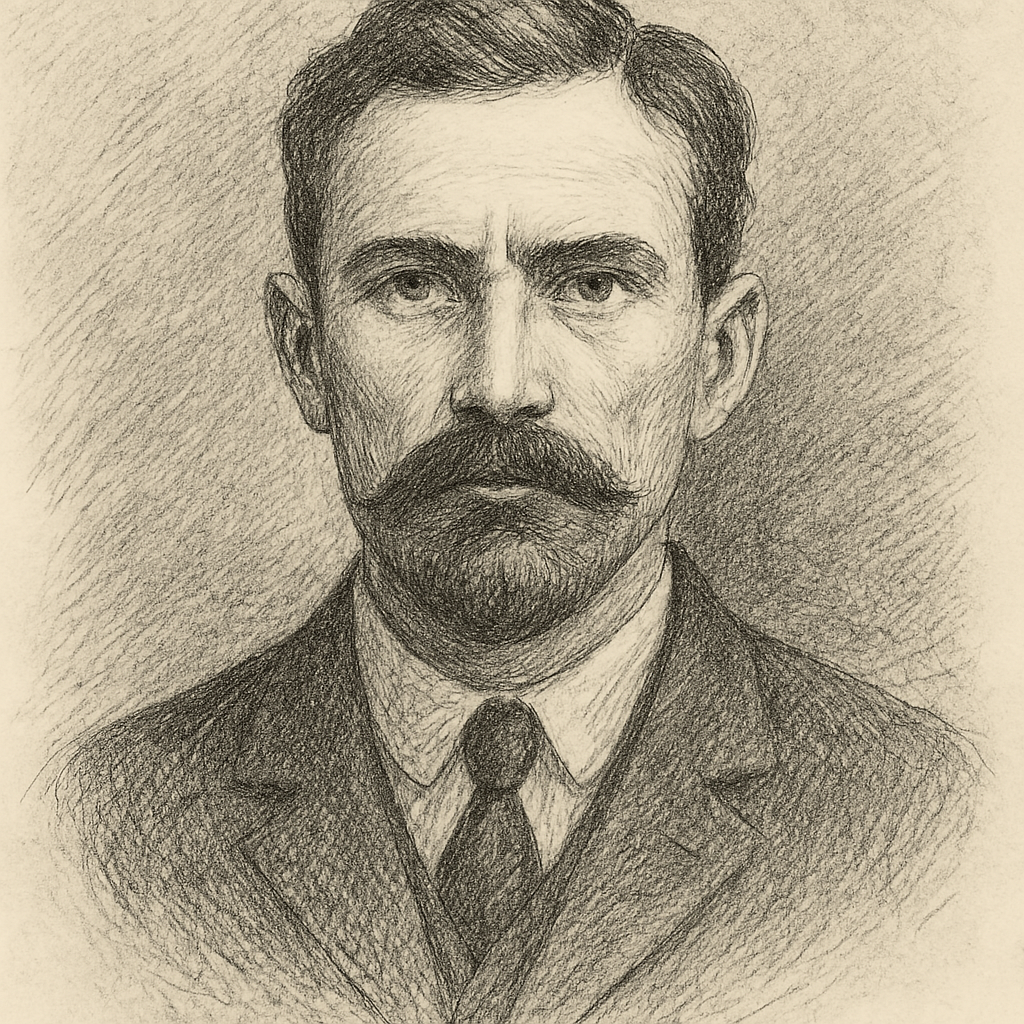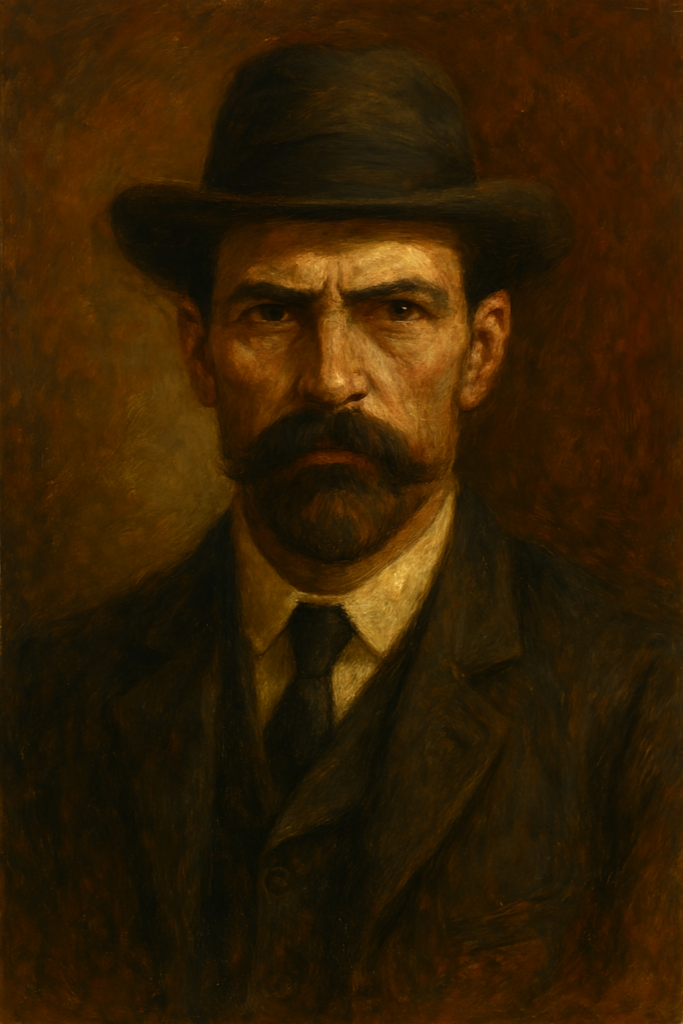Your cart is currently empty!
Axeman of New Orleans (1918–1919)


Status: Unidentified
Crimes: Serial axe murders and assaults
Location: New Orleans and Gretna, Louisiana
Active: May 1918 to October 1919
Overview
The Axeman of New Orleans was a still-unknown serial killer who attacked at least twelve people in the New Orleans area between 1918 and 1919. Most victims were Italian American grocers or their families. The attacker entered homes by removing wooden door panels and used weapons like axes or straight razors, often taken from the victims’ own homes. Despite massive media attention and several arrests, the killer was never identified.
Timeline of Attacks
1918
May 23 — Joseph and Catherine Maggio
Attacked while asleep in their apartment. Throats were cut with a straight razor and skulls were crushed with an axe. No items were stolen. A bloody razor was left at the scene
Source: Times Picayune, May 1918
June 27 — Louis Besumer and Harriet Lowe
Attacked in bed behind Besumer’s grocery store. He survived. She later died from complications. Lowe accused Besumer of being a German spy but there was no evidence.
Source: New Orleans States, July 1918
August 5 — Anna Schneider
Struck with a blunt object while eight months pregnant. She survived and gave birth two days later. Nothing was stolen.
Source: Times Picayune, August 1918
August 10 — Joseph Romano
Attacked in his home. Died shortly after from a head injury. His nieces reported seeing a large man in dark clothing running away.
Source: Times Picayune, August 1918
1919
March 10 — Charles, Rosie, and Mary Cortimiglia
Attacked in their Gretna home. Mary, age two, was killed. Both parents were injured. Rosie accused neighbors Frank and Iorlando Jordano. They were arrested, convicted, and later exonerated when Rosie recanted.
Source: Louisiana State Archives, March 1919
March 13 — The Jazz Letter
A letter claiming to be from the Axeman was published in the Times Picayune. It stated that the killer would strike on March 19 unless jazz music played in every household.
Source: Times Picayune, March 1919
March 19 — Jazz Night
The city responded by playing jazz everywhere. Dance halls were packed. No one was killed.
Source: Crescent City Press, 1919
August 10 — Steve Boca
Attacked in his home. Survived but remembered nothing. He wandered outside bleeding before collapsing.
Source: New Orleans States, August 1919
September 3 — Sarah Laumann
Attacked while sleeping. She survived but could not identify her attacker. Her home showed signs of forced entry like other cases.
Source: Times Picayune, September 1919
October 27 — Mike Pepitone
Final known victim. Attacked in his bedroom. His wife saw a figure fleeing the scene.
Source: Louisiana Historical Digital Library, October 1919
Surviving Victim Accounts
Louis Besumer
Survived but was wrongly arrested and accused. Later cleared.
Anna Schneider
Survived and gave birth after the attack. Could not identify attacker.
Steve Boca
Recovered but had no memory of what happened.
Sarah Laumann
Survived and remembered nothing about the assault.
Rosie Cortimiglia
Badly injured. She falsely accused neighbors, then recanted in court
Sources: True Crime Archives Vol 2, Louisiana Criminal Cases Journal
Suspects
Louis Besumer
Initially arrested and accused by Harriet Lowe. No evidence connected him to the crime.
Frank and Iorlando Jordano
Accused by Rosie Cortimiglia. Convicted, then released when she admitted she had been wrong.
Unidentified figure
Often described as large and wearing dark clothing. Never caught. Media began referring to him as the Phantom or Fiend.
Sources: Ribman, P., Serial Killers of the Gulf South
Theories
Targeted Ethnic Violence
Most victims were Italian American grocers. Some researchers believe the attacks were racially or ethnically motivated.
Organized Crime
Speculation that the Mafia or the Black Hand was involved. No direct link ever found.
Mentally Unstable Serial Killer
The jazz letter’s theatrical language led some to believe the killer suffered from delusions.
Multiple Attackers or Copycats
Not all details lined up between cases. Some believe there may have been more than one person committing similar crimes.
Sources: Capshaw, R., The Axeman of New Orleans
Cultural Impact and Media Coverage
Newspapers and Public Panic
The Times Picayune and New Orleans States regularly published stories about the Axeman. They used phrases like “maniac” and “fiend” which contributed to widespread fear. People armed themselves. Some moved away. Dance halls installed extra lighting.
The Jazz Letter
Published in March 1919, the letter claimed the Axeman was a demon who loved jazz. It said he would spare any household with music playing. This led to a citywide jazz night on March 19. The letter became infamous and is still quoted in true crime discussions.
Music and Jazz Culture
The song “The Mysterious Axeman’s Jazz (Don’t Scare Me Papa)” was released shortly after. Jazz became linked to the idea of protection and resistance. This helped further embed jazz into New Orleans identity.
Racial and Immigrant Bias
The media sometimes portrayed the victims as connected to foreign criminal activity. This likely delayed proper investigation and contributed to stereotyping of the Italian community.
Enduring Myth
The Axeman is now a recurring figure in books, ghost tours, and television. He was portrayed as a ghost in American Horror Story Coven. His story is used to explore themes of fear, culture, and violence.
Sources: FX American Horror Story Coven, Bardsley, M., The Crimes That Haunt Us, Ribman P., Serial Killers, Times Picayune Archives
Crime Map
Zoom in and out to see where it all was.
References
- Ribman P., Serial Killers of the Gulf South, Crescent City Press
- Capshaw R., The Axeman of New Orleans The True Story, True Crime Archives
- Times Picayune Newspaper Archives, 1918 to 1919
- New Orleans States Newspaper Archives, 1918 to 1919
- Louisiana Historical Digital Library
- FX Networks, American Horror Story Coven, Season Three
- Bardsley M., The Crimes That Haunt Us, Mystery Crime Publications
Leave a Reply